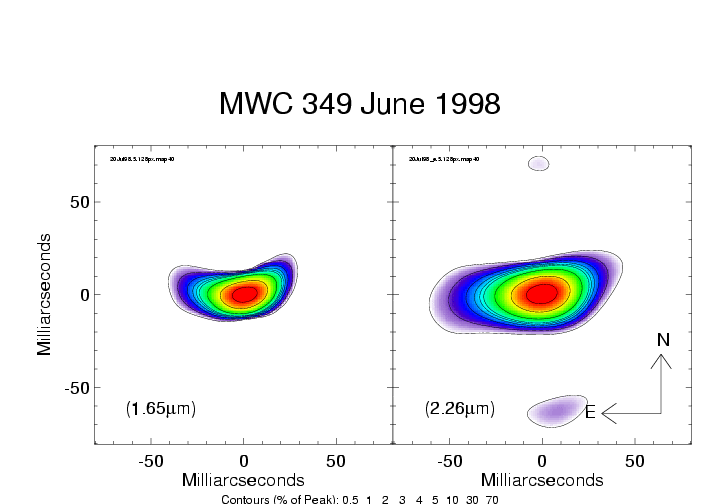MWC 349A: A hot edge-on disk |
|---|
MWC 349A: A hot edge-on disk |
|---|
Stellar birth is among the most hotly-debated and active areas in astronomy today. The world's first images of such orbiting disks, captured at size scales close enough to be glowing hot from the radiation of the star about which they circle, were produced by Keck masking. While LkHa 101 showed an almost face-on disk with a central hole or cavity, this star known as MWC 349A probably has a similar geometry but this time viewed edge-on as we look from Earth, so that we see a flattened structure rather than the circle with a central hole.

The picture above shows images taken at two near-infrared wavelengths. This type of radiation is extremely good at peneterating through clouds of dust, giving us a picture of the central regions of the system. The false rainbow colours are simply used to highlight the shape of the disk at the fainter edges. This research was published as
Photo Credit: Sydney University Physics Department/W.M. Keck Observatory
The Research Team:
Peter Tuthill is a reasearcher in the
School of Physics at the University of Sydney, Australia.
John Monnier works at the
University of Michigan Physics Dept
William Danchi is at the
NASA Goddard Space Flight Center in Greenbelt, Maryland.
For more information, contact: